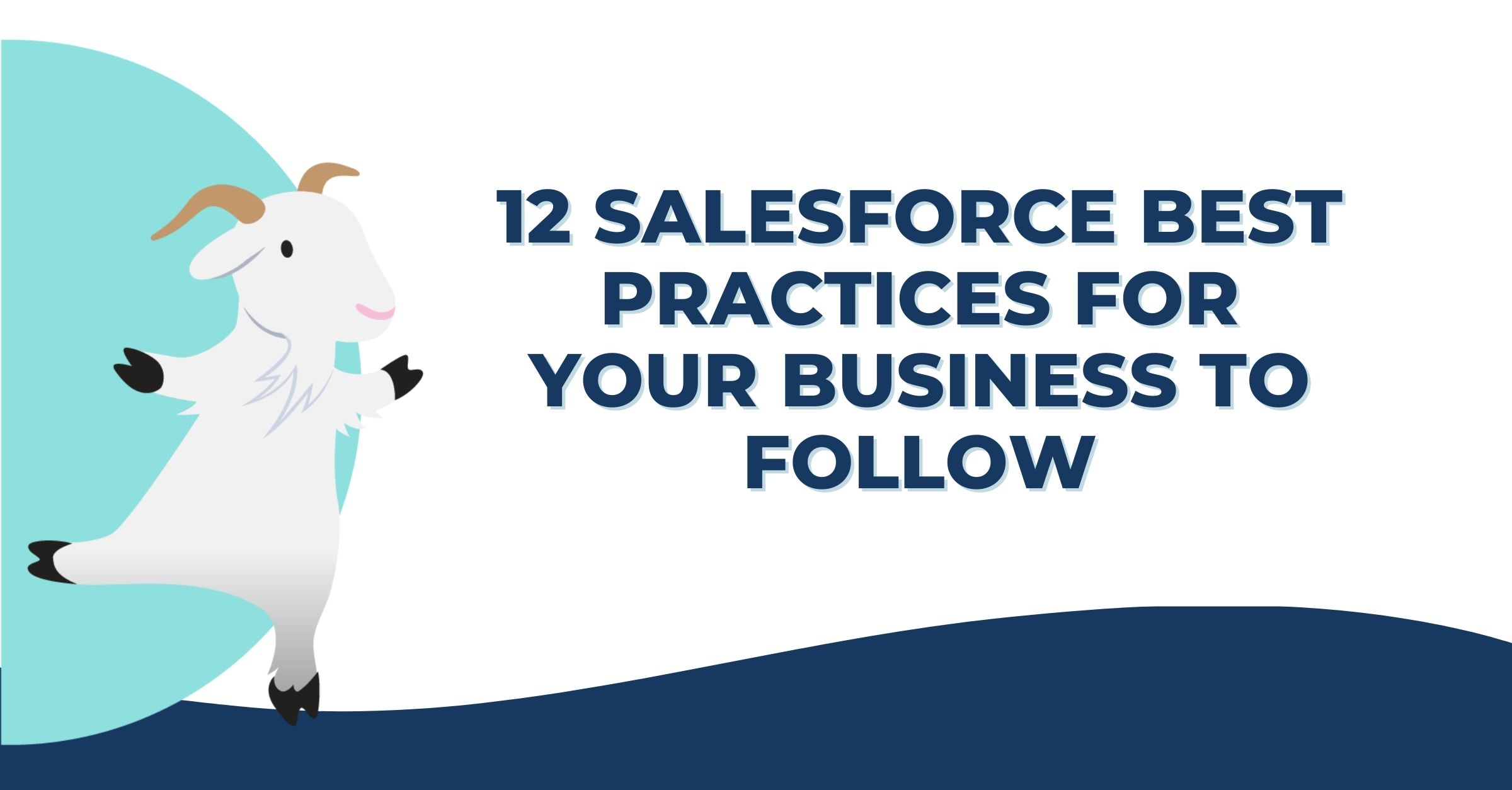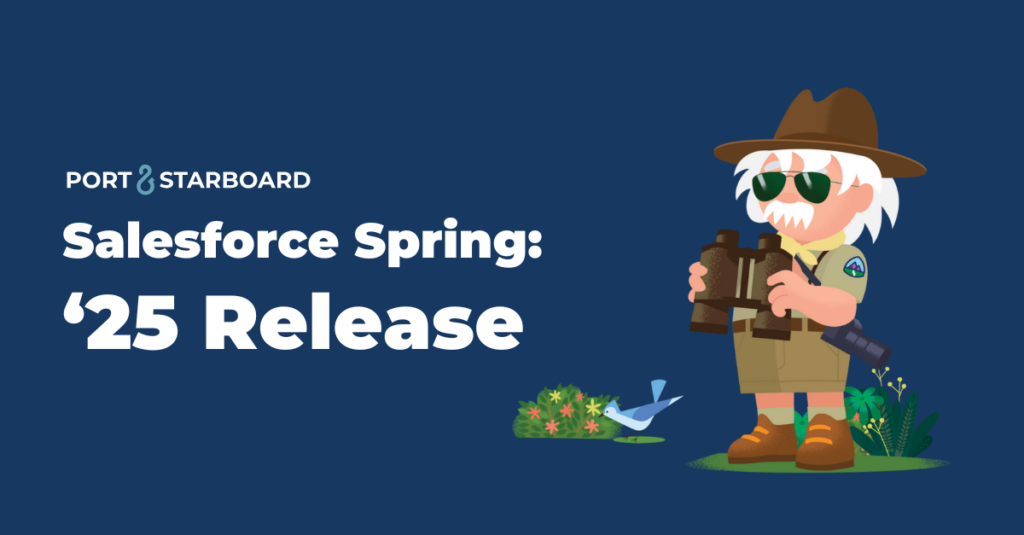Your work is never done when it comes to growing your business. Throughout your Salesforce journey building new workflows, adopting advanced functionality, and improving the user experience will likely always be priorities.
Below are 12 Salesforce best practices that are here to stay. Follow them to keep your organization on track and take your business to the next level year after year.
Salesforce Best Practices Every Business Should Follow
1. Prioritize Data Quality
Maintaining quality data is crucial for keeping your Salesforce CRM system organized. Overlooking data quality can quickly lead to incorrect, duplicate, or missing data flying under the radar. The more data you have, the harder it will be to track. But with the proper safeguards intact, you can prevent common errors.
Implement good data hygiene processes for users so everyone understands the protocol and can maintain consistency. You can incorporate naming conventions and data picklists to standardize your data. Identify what it means for your business to have accurate and complete data, and then train users to follow suit.
Salesforce offers various tools to help maintain data quality, including duplicate record checks, data cleaning, quality metrics, naming conventions, and address validation apps. Remember that maintaining data quality is ongoing and requires due diligence.
2. Categorize Needs vs. Wants
One of the best things about Salesforce is its customizability. You can modify it to operate the way you want and add as many advanced features as you need. However, this can quickly lead to overwhelm – especially when you’re first adopting the platform.
One of our top Salesforce best practices is to start with standard features and build from there. Separate what you need today versus what you eventually want to add. Once you develop a strong foundation (needs), you can add functionality (wants) to improve your processes and further support your end-users.
3. Gain a Deep Understanding of Internal Processes
Before adding new processes or incorporating advanced features and functionality to your Salesforce solution, you need to understand your current workflows and existing business processes inside and out. What journey do users follow step by step from beginning to end? What interactions trigger key decisions, like picking up the phone to call you, signing a contract, or getting a quote?
Break down and document your processes first, and then supplement them with technology to enhance the user experience.
4. Streamline Your Processes
Streamlining involves ensuring users and admins have everything they need to do their jobs well. Make it as easy as possible to find information in your system and enter new data correctly. Salesforce Knowledge is a great tool for this, as it helps your customers get exactly what they need using a centralized knowledge base for all your agent and customer information. Communicating regularly with end users can help you identify problems and bottlenecks in your processes. By understanding their needs, you can address pain points and provide the support your organization needs to run smoothly.
5. Integrate Automation, AI, and Machine Learning
Setting up automations can help with streamlining processes, reducing data errors, and making your org more efficient overall. Automate tedious tasks to save time and money. Your automated processes can run quietly in the background while your team focuses on more essential or complex duties.
Tasks that are easiest to automate include those with consistent parameters or logic that apply to multiple users and are repetitive. After identifying what you want to automate, map out the process in detail from beginning to end, so you know which steps to replace with automation tools.
Salesforce has various automation tools, like Flow Builder, to help streamline and improve processes and workflows.
6. Test, Retest, and Document
When building new processes in Salesforce, test them thoroughly before implementing them. Most likely, they won’t work how you want them to immediately. Flow Builder allows you to test workflows to remove existing bugs before going live. Don’t rush this part of the process. You might put user data and critical organizational information at risk if you do.
After building out your processes, it’s vital to keep up with why you built things the way you did and how others can use the system as intended. Another one of our top Salesforce best practices is incorporating a general documentation process for administrators and end-users. Create supporting documentation so others can quickly learn how each method works, the main elements involved, and the functions it performs.
7. Designate a Single Product Owner
A designated product owner is one person trained as your organization’s “Salesforce guru.” They may be an internal stakeholder (your designated “Salesforce champion”) or an external administrator. When questions or concerns among your team arise, they can go straight to the product owner for help. Users can also report issues and request updates as needed.
8. Keep the End User at the Center
Your ultimate goal for Salesforce should be to make your end users’ lives easier. Involving them throughout the entire process – even before implementation – will give them a sense of ownership and allow you to address pain points around their experiences.
Keep users informed of changes and updates, ask questions to get their buy-in throughout different stages of your processes, and prioritize their needs. That way, you’ll design a platform that leads to optimal outcomes for your business.
On the other hand, if you don’t build out your system with end-users in mind, you could risk users abandoning ship due to confusion or feeling overlooked and misunderstood.
9. Adopt a Change Management Strategy
Once you’ve reached 100 or more users in Salesforce – including multiple departments – it’s best practice to adopt a change management strategy to encourage innovation while limiting risk. We cover this in depth in a previous article: “Our Best Advice for Salesforce Leaders Who Want to Drive Change.”
The change management process involves prioritizing and releasing new functionality without negatively impacting users or your business. Here’s a quick overview:
- Choose a Salesforce change management team.
- Develop your strategy for fielding, tracking, and implementing change requests.
- Engage stakeholders during discovery sessions, design reviews, and user acceptance testing.
- Consider the impact (both positive and negative) your new features will have on users, processes, departments, and data.
- Develop a training and communications strategy.
10. Focus on Data Security
We could write an entire article (if not a whole book) on best practices for keeping Salesforce secure. But we’ll spare you by giving you a brief summary here.
2021 was a record-breaking year for data breaches – up 68% from previous years. Hackers like to target popular software, so keeping your Salesforce platform updated, bug-free, and safe for all users is crucial to maintaining trust and avoiding cyberattacks.
Here are some cyber hygiene strategies to help you maintain trust with users by safeguarding their information:
- Use secure passwords.
- Use multi-factor authentication.
- Educate users on avoiding falling into common traps like phishing scams and malware attempts.
- Run data backups daily.
- Store data in the cloud.
- Limit permissions, giving users only what they need to do their work.
- Audit your Salesforce account frequently to catch any threats as soon as possible.
- Archive data you no longer use so you can focus on protecting your most important information.
- Track logins to verify that only legitimate ones can access sensitive information.
- Filter IP addresses and deny users who may want to harm your business.
11. Know Who to Contact for Help
If you run into a problem in Salesforce, do you know who to contact immediately? If you have a Salesforce partner (see next section), you can give them a call. But if you don’t or you need after-hours help, the Trailblazer Community is a great place to start. Join ongoing conversations, ask questions, access free training, and build your network.
Here are several fantastic resources to keep on hand:
12. Select the Right Salesforce Partner
An implementation, development, and support partner can guide you throughout your entire Salesforce journey. They can help establish processes using Salesforce best practices to set you up for ongoing success. They can also help you decide what customizations you need (and don’t need) to stay focused on core functionalities and build something manageable for your team.
Your partner can offer ongoing training and support when needed, taking care of enhancements, user problems, bugs, and new requirements.
Hire Port & Starboard as Your Fractional Salesforce Administrator
Our Salesforce-certified team of experts is at your disposal to provide project and customer support and ongoing maintenance.
Whether you want to implement Salesforce for the first time, your current system is failing, or fall anywhere in between, we’d love to help customize your solution to suit your needs and bring you the success you desire.





